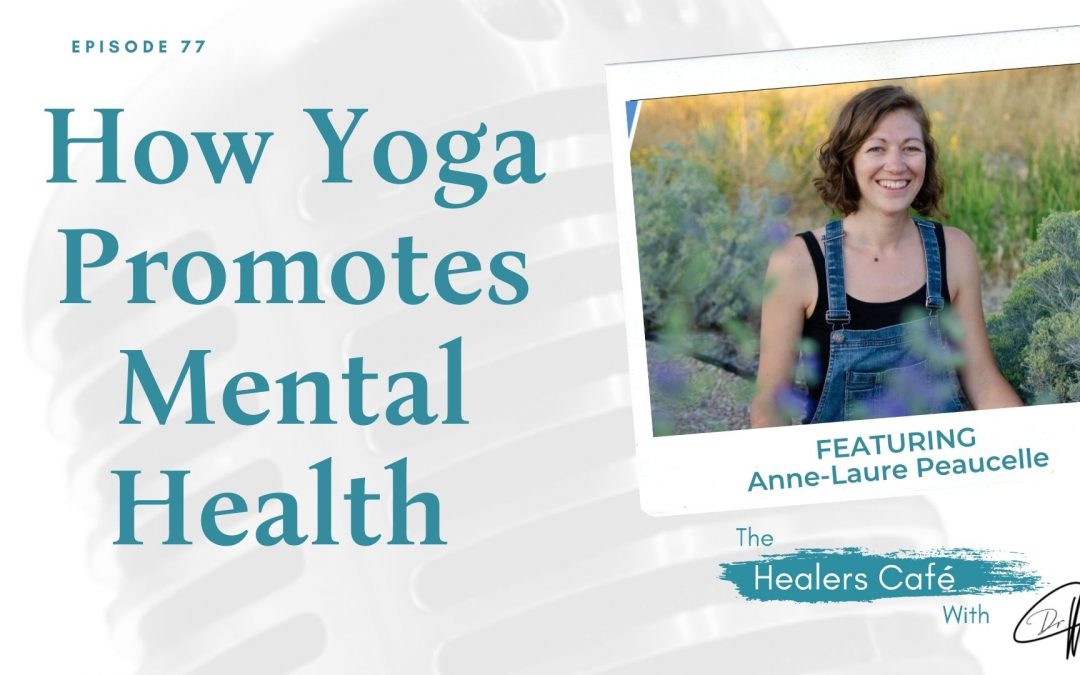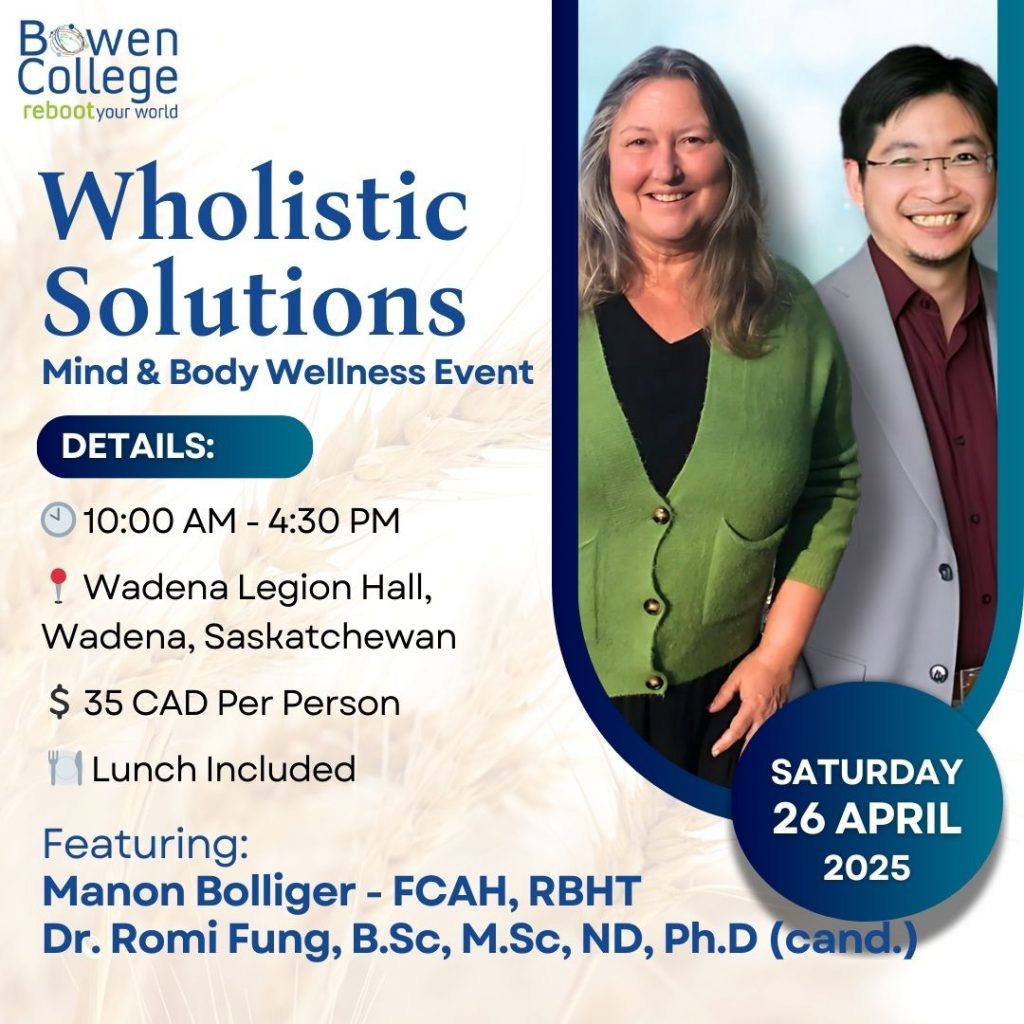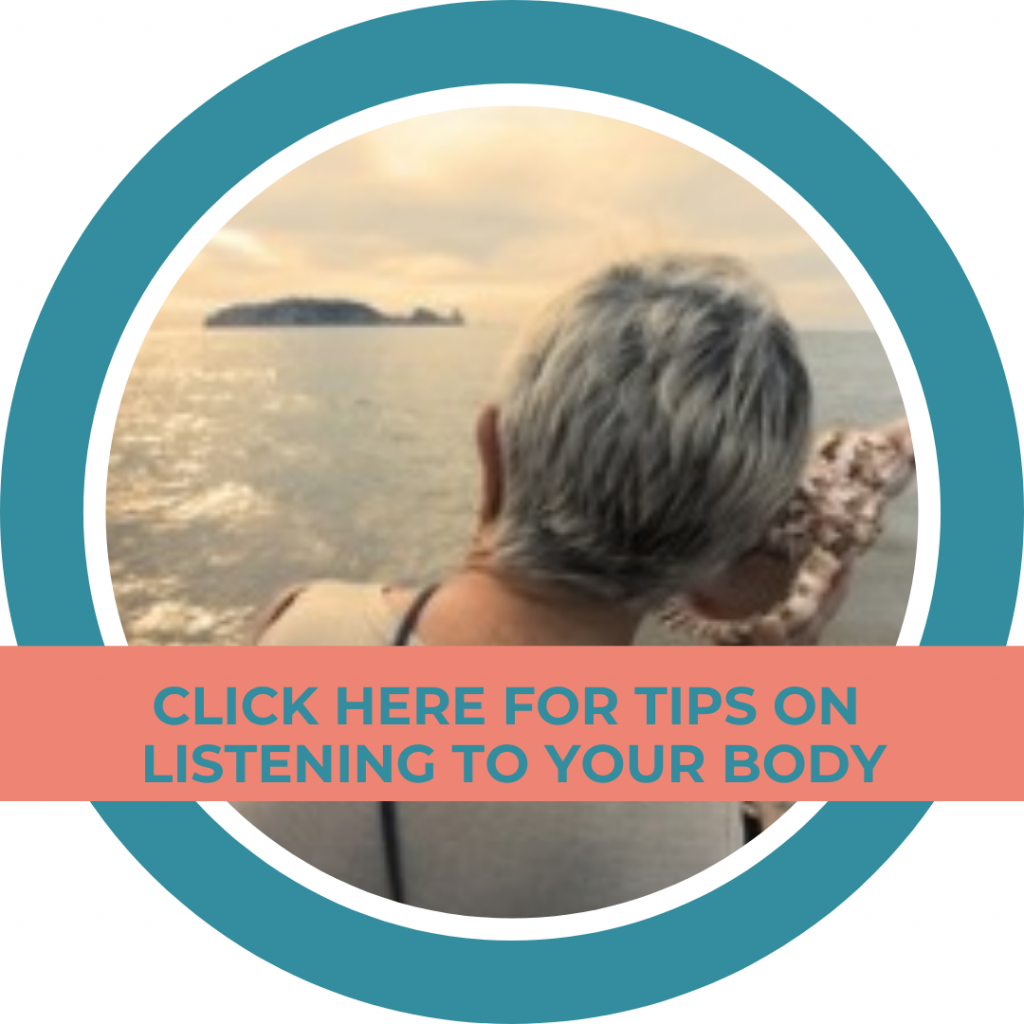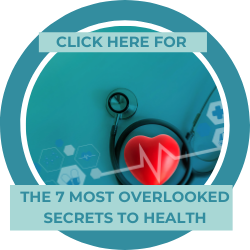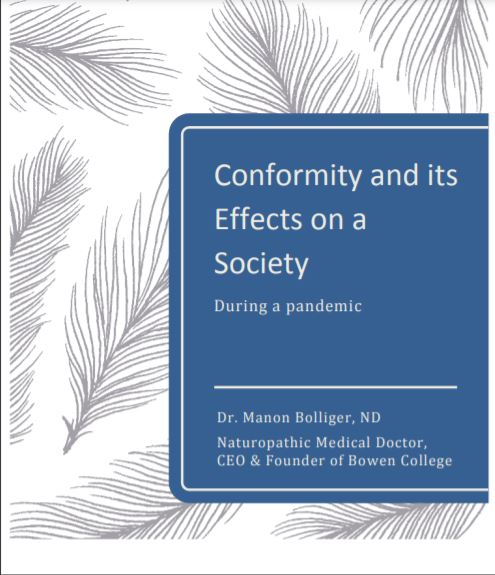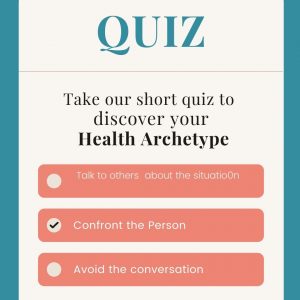How Yoga Promotes Mental Health with Anne-Laure Peaucelle, on The Healers Café with Dr M (Manon Bolliger), ND
In this episode of The Healers Café, Dr. Manon Bolliger ND, talks to Anne-Laure Peaucelle a yoga teacher and yoga therapist specializing in emotional and mental health.
Highlights from today’s episode include:
Anne-Laure Peaucelle 05:20
I think that…so, the way I look at it is that emotions are experienced in our body, and our body keeps that memory of previous experiences. And often when we have important events or like big experiences in our life, it will have an emotion…we will have an emotional response to it. And depending on how we process that event, at that time in our lives, I think those emotions can kind of get trapped or stuck in our bodies
Anne-Laure Peaucelle 07:38
I think where yoga can be helpful with that is that it helps us cultivate that self-awareness. And I think, when we make that intention to start to cultivate self-awareness, I believe that things start to make themselves more obvious to us. And we start maybe to see things differently, or to make connections that we may not have made in the past.
Anne-Laure Peaucelle 18:47
Like the way that I see emotions is that some of them that are easy to feel some of them are challenging for us to feel. And as we increase our ability to sit with the ones that are difficult to feel, is really how we can move them out and release them. And so, movement can be a good way to create awareness as well.
About Anne-Laure Peaucelle
Anne-Laure is a Yoga Therapist with a passion for emotional and mental wellness. She first came to yoga in 2012 while working as an engineer, and it quickly became an integrated part of her life. Her natural curiosity and love of learning led her to train as a yoga teacher, and then as a yoga therapist. Yoga therapy has added a new dimension to her teaching and she has brought yoga to hospitals and rehabilitation centers, as well as veterans and women’s shelters. Always incorporating therapeutic yoga and encouraging her students to become curious about what is happening in their bodies and minds, her intention is to empower her students to build self-awareness and resilience using the simple yet powerful tools of yoga.
Core purpose/passion: | My purpose and vision is to change the way we (as a society and as individuals) look at emotional and mental health. I’m passionate about bringing the body back into the healing process through yoga. It’s all connected and we’re all connected. It’s been so fascinating to me to see how different modalities, different cultures approach emotions. I’m passionate about people, learning how we operate and why we do the things we do. Yoga gives us a way to better understand ourselves and each other.
Website | Facebook | Instagram | LinkedIn |
About Dr. M (Manon Bolliger), ND:
Dr. Manon is a Naturopathic Doctor, the Founder of Bowen College, an International Speaker, she did a TEDx talk “Your Body is Smarter than you think. Why aren’t you Listening?” in Jan 2021, and is the author of Amazon best-selling books “What Patient’s Don’t Say if Doctors Don’t Ask”. & “A Healer in Every Household” For more great information to go to her weekly blog: http://bowencollege.com/blog.
For tips on health & healing go to: https://www.drmanonbolliger.com/tips
SOCIAL MEDIA:
Dr. Manon, ND – Facebook | Instagram | LinkedIn | YouTube | Twitter | Linktr.ee
About The Healers Café:
Dr. Manon’s show is the #1 show for medical practitioners and holistic healers to have heart to heart conversations about their day to day lives.
Follow us on social media! https://www.facebook.com/thehealerscafe
TRANSCRIPT
Welcome to the Healers Cafe. Conversations of health and healing with Dr. M (Manon Bolliger), ND.
Dr. Manon 00:18
So welcome to the Healers Cafe. And today I have with me Anne-Laure Peaucelle. And she is a yoga therapist who really works with mental illness emotions. And anyway, I’m really thrilled to hear her and see what she has to say about yoga and emotions. Because people often look at yoga as a way to just quiet the mind or exercise the body. And there’s certainly much more to it than that. So welcome to the show. And thank you for taking the time.
Anne-Laure Peaucelle 01:01
Thank you so much for having me. I’m excited.
Dr. Manon 01:04
Alright, so I want to ask you the first question, which is what got you personally in yoga into yoga, and specifically the work that you’re doing?
Anne-Laure Peaucelle 01:17
Yeah, so I started to practice yoga. Eight years ago, also, and at the time, I was working as an electrical engineer, so quite a shift in, in career here. But at the time I was really looking for a different way to move my body. And I guess I wasn’t really expecting to, you know what yoga brought me at that time. But I guess the more I practice yoga, the more I realized that there was just so much more to it than the physical practice. And a few years after I started practicing, I decided to train as a yoga teacher. And at the time, it was really more of a way to deepen my own practice, and to learn more about yoga. But by the end of my teacher training, I just knew that I wanted to teach, and I wanted to share this with people. And I had also realized, like how much it was helping me with my mental health and emotional health. And I guess, in hindsight, I guess it probably didn’t realize that at the time, but in hindsight, it was really like a way to help me process whatever I was going through to help me process my emotions in a different way. And so, I started to…
Read more...
look a little bit deeper into mental health and how you know, yoga could help with mental health. And I did a trauma informed yoga teacher training as well to learn more. And then I came across yoga therapy as a way to work one on one with people or with small groups who have the same therapeutic goal. And so, from there, like, I guess I just learned, like a whole bunch of new skills. And I guess more specifically, like how yoga could be applied to, like very specific therapeutic goals. And so, for me, you know, I just had my mind set on supporting people who are experiencing mental health challenges, anxiety, depression, PTSD was mostly what I was focusing on. And over the last, I guess, five years now that I’ve been trained as a yoga teacher as I was going deeper and deeper into this, I just realized like how big a role emotions play in this and so that’s how my, I guess the work that I do has shifted a little bit over the years to really bring emotional health into the mental health, piece and to really look at how yoga can help us process our emotions, feel our emotions, hold space for us as we feel our emotions. And how that can be a big part of anxiety and depression as well.
Commercial Break 04:36
It’s interesting, I do a body work myself called Bowen therapy, and I totally see the interconnection, but let’s break this up a little bit. So that the people who it’s not as obvious why all of it makes sense. So, when let’s go the first statement you made just working backwards here was how involved emotions are in mental wellness or mental health or whatever. Can you a little expand on that? What do you mean? And you can use like a case, for example, or some, you know, if it helps to illustrate the point, but what do you mean by that?
Anne-Laure Peaucelle 05:20
I think that…so, the way I look at it is that emotions are experienced in our body, and our body keeps that memory of previous experiences. And often when we have important events or like big experiences in our life, it will have an emotion…we will have an emotional response to it. And depending on how we process that event, at that time in our lives, I think those emotions can kind of get trapped or stuck in our bodies. And if we are not allowing ourselves to feel it for any reason, or we are letting ourselves be like completely overtaken by our emotions, then I feel like that can and I feel like that’s how it showed up for me. Those emotions can later show up, as you know, what we call anxiety, or what we call depression in different ways. And I think, and there’s other like, I guess, causes of anxiety and depression, I’m not saying that this is the root of it for everyone. But I think it can be a big part of it, like how we process our emotions, how we feel them or not feel them is a big part of like, how that construct later as anxiety or depression.
Dr. Manon 07:06
Okay, and then when do you say that? It’s in the body? And I would agree with you and my experience? Definitely. That’s what I’ve noticed or witnessed. But how do you when people asked as I was running a workshop yesterday, and they’re saying, well, how do I know where my emotions are in my body? And how do I know whether I’m suppressing them or not? So how would you answer that one?
Anne-Laure Peaucelle 07:38
Yeah, that’s a really good question. I think where yoga can be helpful with that is that it helps us cultivate that self-awareness. And I think, when we make that intention to start to cultivate self-awareness, I believe that things start to make themselves more obvious to us. And we start maybe to see things differently, or to make connections that we may not have made in the past. And I guess, usually where I start with this is to create a way for people to feel safe, so to establish that safety in their own bodies. And that can take a little bit of time, depending on you know, if there is a history of trauma, or, you know, other experiences where they have not felt safe in their own bodies. And so, for me, like, it’s important to first have in place some of those tools for people to be able to self-regulate, and that if things become too overwhelming, they know that they can come back to a place where they feel safe. And once we’ve created that, then, I feel like once we know that we can come back to a place of safety, it can also feel easier to actually explore where our emotions may be showing up in our body. And before that, maybe we’re just not able to see it because we’re just not sure if we can handle it yet. And, but I guess like in terms of bring that awareness, I think it’s a practice of like, coming back to it and kind of that practice of turning inwards and noticing any areas of like tension or discomfort or pain that is already present in our body. And once we are aware of that, then that may or may not be because of an emotion but I usually guide people through like a short meditation or like a guided awareness practice so that they can check in with themselves, notice where you know, some of those physical sensations might be present. And then that’s usually like the starting point. And if, you know, they make that connection between a certain physical sensation and emotion or thought that they are having, then that’s, that’s the place where I, where I start with people.
Commercial Break 10:27
So, bringing them into awareness, like safety first, and I think that’s crucial, especially trauma or PTSD. They need to navigate back to something militarily safe. And, then it’s noticing the emotion itself. But what do you see when you see an emotion, so let’s say people are you’re doing yoga, or you’re teaching yoga, because that’s primarily how you’re working, right? So, can you walk us through how that would look like? How does it you know, give a real example, no names, nothing. But somebody with PTSD, for example, with a real, you know, something that happened, and they’re reliving it. So, explain how that works.
Anne-Laure Peaucelle 11:26
Yeah, I guess the example that I have in mind, in terms of feeling the emotions in the body, I was working with someone who was sharing how she had been realizing that she had a lot of anger in herself that she had not been expressing. But at first it was an, I guess, obvious to her that she wasn’t expressing it, because she was at the point where she wasn’t even allowing herself to acknowledge that she was angry. And so, when we guided her through this meditation, where, you know, I asked her where she felt some sensations in her body. And if that in that anger was associated with it, and so she talked about how like, she was seeing, like this visual of fire in her, like, in her solar plexus, and that the fire was kind of like lifting up to through her throat, but like, it was just getting stuck at that point, and she wasn’t able to express it. And so, with that particular example, like I invited her to do that visualization, and that meditation on her own, like daily, where like, in a place where she felt safe to do so. And also, to allow herself to lead to that, I guess, initial visual that she had to evolve, because, you know, as she’s getting, I guess, familiar and more comfortable with having that anger as a part of her, that image of the fire might also change over time. And so, with that, she was able to first acknowledge that she was having that emotion. And also, to start kind of, you know, get curious about it, and get familiar with it. And I guess make other connection with how it was showing up in her life in other ways.
Dr. Manon 13:57
So, so what was the PTSD in her case?
Anne-Laure Peaucelle 14:07
I guess I’d rather not share that.
Commercial Break 14:11
Yes. But in other words, what came up as a visual was the, like, the incident itself, or the body sensations, or what was the uriens of like, again, what I’m seeing is to clarify for people what PTSD also feels and seems like because some people don’t realize that they’re suffering from it. And so how would you recognize it? And yeah, what did show up, you know, and how did you work with it? Yeah.
Anne-Laure Peaucelle 14:52
Yeah. So, for her, I would say that what was coming up was more like the physical sensations of what she hadn’t allowed herself to feel. Because there was a lack of safety and there was a lack of, I guess, safety to express it and also to feel it. So, I guess in this particular example, and like in that particular like meditation, I don’t know whether, you know, visuals of the traumatic incident was actually coming up for her. But I think like, I guess the fact that she hadn’t allowed herself to express that anger was both linked to her traumatic experience. And also, like some, I guess, integrated beliefs around what she was okay to do and not okay to do.
Commercial Break 16:18
Hi, I’m Dr Manon, Bolliger and I wanted to take a moment to thank you for watching these podcasts. If you haven’t subscribed, please do. Also, feel free to leave comments and like it. This way more people get to find out about this work and about other choices for health. So, I think it’s really important that, that we all share this information, I have a free gift to you. It’s a seven-sequence email that has tips for every day, and a little insight about how to live your life when it comes to health. And it’s very much built on how I managed to overcome stage four cancer and what it took. So, I would love you to have this. And thank you once again, for listening to these podcasts.
Anne-Laure Peaucelle 17:20
If that makes sense?
Dr. Manon 17:21
Yeah, yeah, no, I understand that. So, in experiencing this, so she’s safe in her body is the yoga practice, that then allows the emotions to come out if the person’s ready. Like I know, the body never does anything, unless you’re ready to accept it. You know, so I think it’s always safe, if it shows up, in my mind that at least that’s how I.
Anne-Laure Peaucelle 17:51
Yeah, yeah. That’s true. Yeah. Yeah.
Dr. Manon 17:54
But so, in this case, she has anger showing up, then the internal peace is afraid of feeling the anger fully. That’s the process and then you use the yoga to do what with that? How does it keep moving and allow it to release?
Anne-Laure Peaucelle 18:19
Yes. So, I think it’s a combination of as I was saying, like, having the tools available to self-regulate, if things become too much or too overwhelming. And at the same time, it’s a way to create a time and a practice for ourselves to really like hold space for whatever needs to come up and whatever needs to move out. And I think like a combination of movement and breathing practices and yoga philosophy, concepts is what is allowing for the emotion to make its way both like through, you know, us like understanding it on a mind level, but also like on a more physical and like somatic level. And so, it’s, I guess it’s about to me, it’s about creating that ability to sit with the discomfort of just not knowing what might happen if we allow this emotion to be felt in the body. I think that’s a big part of it, because I think we spend a lot of time trying to stay comfortable, and not being able to stay with the discomfort and so with all of this.
Anne-Laure Peaucelle 18:47
Like the way that I see emotions is that some of them that are easy to feel some of them are challenging for us to feel. And as we increase our ability to sit with the ones that are difficult to feel, is really how we can move them out and release them. And so, movement can be a good way to create awareness as well. Because often like how we, you know, the way that we practice yoga, can shine some light on the way that we do other things in our life. And by you know, maybe staying in some of the poses that are feeling a little bit challenging is a good way to practice sitting with that discomfort. So that’s, that’s one example where movements could be a way to help us move the emotions through the body. But it could be the opposite as well. Like if we are maybe avoiding challenging ourselves physically, maybe we also avoiding challenging ourselves in other areas of our lives. So yeah. Does that answer your question?
Dr. Manon 21:08
Yeah, no, no, that’s it. That’s interesting. I never thought about that parallel that might be it might not challenge the body if you’re not willing to challenge emotional state. So that’s interesting. One thing I notice when people are releasing emotions, is that there’s, for me, it seems to be so many times the case that I now tell my patients Oh, it’s we’re talking about a 90 second journey. I feel that it that if it’s allowed, I have not seen an emotion last more than 90 seconds.
Anne-Laure Peaucelle 21:50
Hmm. That’s really interesting.
Dr. Manon 21:53
Have you come on seen or noticed? Or I don’t know, it may not be the same circumstances with yoga.
Anne-Laure Peaucelle 22:01
I guess it’s not something that of I guess, notice specifically or like, you know, paid attention to like how long it would take, but I think it’s true, like thinking about my own experience of like experiencing some challenging emotions I get, it’s that, you know, it comes to a certain level of intensity. And if we allow it to be at that level of intensity for a certain time, then it just eventually starts to subside. So, I think, yeah, that’s and you know, that’s a guess a concept that’s very present in yoga philosophy is that, like, change is really the only constant and like, things are continuously changing and evolving. And so that as we observe things and witness things, then we can we know that things are impermanent, and things will change, and move through us if we allow it. But I guess at the same time, what I’ve noticed is that like, the more we are trying to make something go away or make something, you know, be a certain way. That’s usually when it takes a lot longer.
Dr. Manon 23:24
Yeah, it resists. Absolutely. Yeah. And I think the other resistance is what I call feelings. So, it’s the story we have, or we create, about our emotions. So, if we witness the emotion and go, Wow, okay. You know, and just let it do its thing and don’t attach the mind and the story, all of that because then we go down another and I think that’s where, you know, when we talk about mental health, it’s also when we very attached to needing to control with our minds what it means. Then we’re sort of judging it and we now have feelings about it. And when we have feelings about it, then we have to kind of break open what we’re what our beliefs and our thoughts and that becomes so enmeshed but it’s much harder to release whereas a pure emotion is an emotion. There’s some good emotions and bad emotions, but there’s no such thing. They all have their place. Yeah, best sort of let out. So, when people have done this work and the in yoga has facilitated that process. Do you find that when they do, they first of all, have you seen that they go back to, let’s say the emotion but they live it differently or a different depth to it? Or it just doesn’t need to go back there? What’s your experience with that?
Anne-Laure Peaucelle 25:11
Yeah, yeah, that’s a really interesting question. I think often, I guess often what I, what I share with my students is that, you know, there’s not going to be a time where we just arrive at this place, and everything is just amazing all the time. And usually, their first reaction is like, oh, well, that’s not really what I want to hear. But I think our relationship with the emotions start to change. And that’s, I guess, that’s what I’m witnessing it typically, is that as we change the way that we look at things, then we probably will experience that same emotion, but the way that we experience it will be different. And like you said, you know, we attach like a certain meaning to a certain emotion. And that’s usually where the challenges come from is because we are, you know, labeling it as positive or negative or anything else that we may be labeling it as. So, yeah, I think that as we are like, reframing and shifting things, then this is really like, the core of, you know, the way we look at emotions, I think, is what is going to dictate whether we struggle with a certain emotion or not.
Dr. Manon 27:03
And so, like, some of the emotional work can be done with brass can be done on your own. What do you find that yoga…what’s the secret extra sauce, that makes you feel that yoga is a way, or favorite way of getting, you know, to the root of this and to help people?
Anne-Laure Peaucelle 27:34
Yeah, um, I think the first thing is that Yoga has a lot of different tools available, and a lot of different, I guess, aspects to it. So, it gives people the opportunity for different entry points in a way. So, if they resonate more with movement, then that’s usually what is going to help them the most, if there isn’t more with breathing, or sound or meditation, like we just we have the, you know, the ability to choose from, like, a variety of different tools to find what will resonate the most with someone. And there was something else I was gonna say, but it slipped my mind.
Anne-Laure Peaucelle 28:31
Oh, yeah, I think that what is a big part of why this helps, and like, I don’t think that’s specific to yoga. But it is, there’s something about like having a daily practice that is just for yourself. That creates and builds or rebuilds that trust that we have in ourselves to be able to navigate challenges. And the reason I like working with yoga is because like I can work with someone, and then we work together to create a yoga practice that is tailored to them. And now, you know, that are going to have elements that are like really supportive for this person, and really nourishing for this person. And they can do that on their own. And I think that’s really empowering for people to realize that, like, they have the resources within themselves to actually be able to do that. And, you know, that’s true for a lot of different practices as well. So, you know, I think that whatever the practice is that someone resonates with and can create that daily time for themselves is a really important part of why this really helps.
Dr. Manon 29:57
Okay, now, so I mean, our times already up. Any last thoughts you want to share with? With? Either, you know, maybe, actually, maybe to healthcare practitioners, what you want them to know where any projects you’re working on, that might be a good thing to share as well.
Anne-Laure Peaucelle 30:23
Yeah, so I’m starting to work with mental health professionals to share some different holistic tools that they can integrate with their own clients. And I think that there’s a lot of wisdom in more ancient traditions like yoga. And there is also a lot of wisdom is more like modern psychology. And I think, by finding a way to combine these two things into really encompass like both what we’ve learned through psychology, you know, about the mind and the body as well. And really knowing that there is a connection between the two is going to be very important moving forward and supporting as many people as possible as they are on this journey of healing themselves. And so, yeah, so I’m really passionate about integrating yoga into how we, I guess, heal mental health challenges currently, and in the way that we do things in our society right now. And I think there’s a lot of like, it can be really powerful to combine the two together and just integrate yoga and other holistic practices into our healthcare system.
Dr. Manon 32:00
I certainly, I am sure you know, Dr. Gabor Matei. Is doing quite an integration now. Which I think is, is just beautiful and very necessary. So yeah. Definitely. Big, big changes that are needed to our health, for sure. Yes. So well, thank you very much for being with us.
Anne-Laure Peaucelle 32:23
Yeah. Thank you for having me.
Dr M (Manon Bolliger), ND
Thank you for joining us. For more information, go to DrManonBolliger.com.
